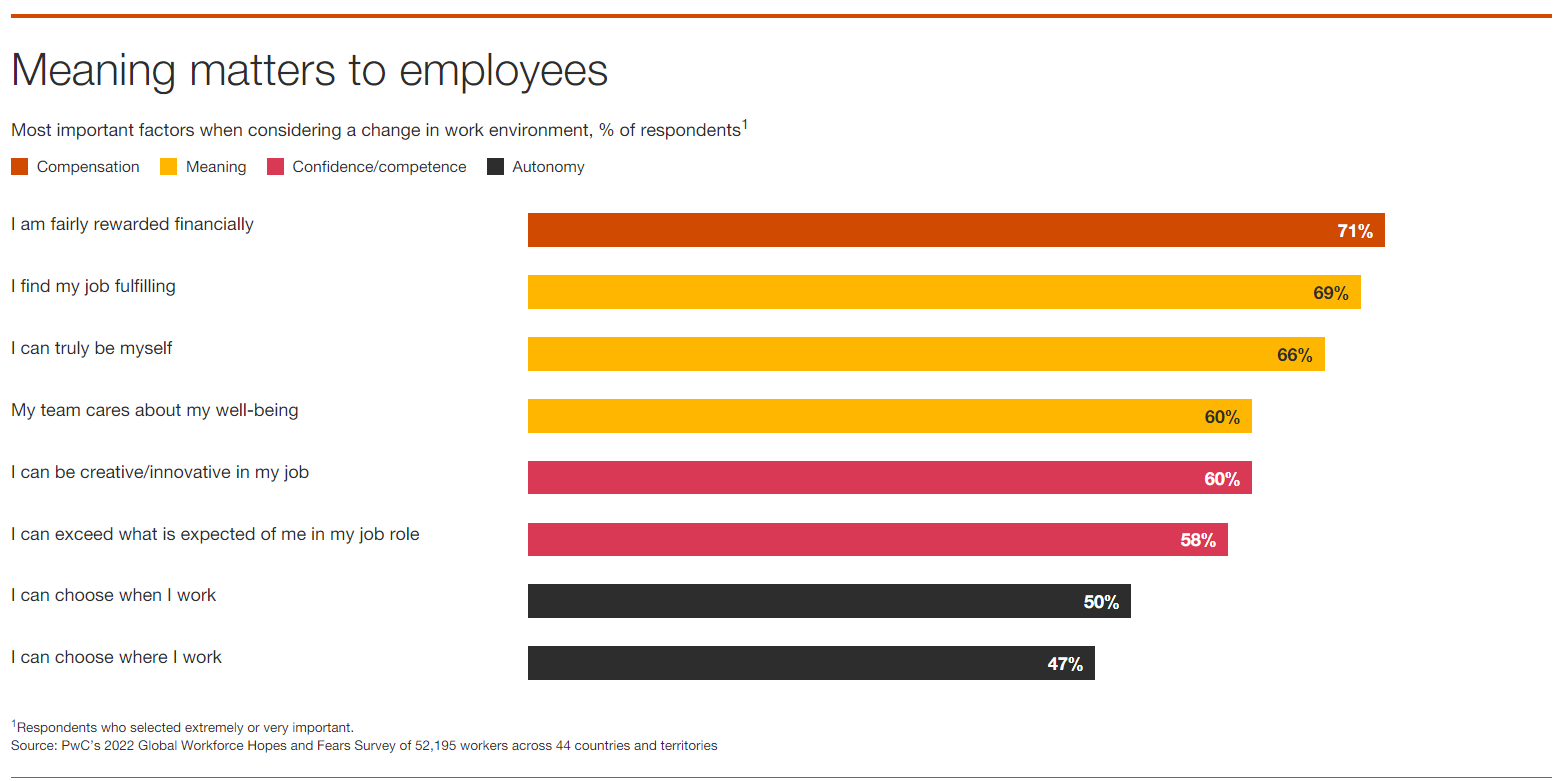
Many people will be on a quest not just for renewed physical fitness but renewed career fitness in the New Year.
If there is one key challenge employers need to tackle in 2023 it is enabling managers to retain staff.
Yet a growing issue will be keeping hold of good managers too, particularly in IT. End-of-year data from Payscale revealed the 20 jobs people are most likely to leave: In second place was “software development manager”...
Need ideas on staff retention in 2023 from Human Resources? Be warned: Two HR roles (junior and more senior positions) were also in the top 10 jobs people are most likely to try and quit in 2023.
The Great Resignation triggered high levels of churn at all levels

The Great Resignation in 2022 continued a trend for a term first coined in May 2021 that describes the record number of people leaving their jobs since the beginning of the pandemic.
Motivations are not opaque: One of the world’s largest workforce surveys from PwC – more than 52,000 workers in 44 countries – found in June 2022 that pay was the main factor in people wanting to change jobs; although finding a fulfilling role was a close second (and likely to become even more important as inflation bites.)
Enter the Great Retention
This year, 2023, the focus of many employers will be on not just the perennial challenge of identifying and recruiting the right people, but retaining staff and tackling employee turnover: Call it the Great Retention.
The importance of doing so cannot be understated. Doctoral research at the end of 2022 found that nearly a third of the US workforce would quit their job without having another lined up – despite the absence of a safety net. Job satisfaction has clearly become of quite profoundly existential importance for many and awareness is high: According to the Career Institute, 76% of employers are concerned with the employee turnover rate.
Staff retention in 2023: What can I do better?
So what can companies do better? A new whitepaper from the University of Phoenix, led by two economics professors, suggests that when hiring, first impressions will be critical; this should – they suggest – include more streamlined onboarding processes that give employees more information simply and swiftly.
In a remote-first world, this has its own challenges. Aim to stay engaged with regular check-ins over shared communication channels. Celebrating contributions with feedback and recognition and personally acknowledging milestones with a hand-written note goes a long way too: According to one study, 70% of employees believe their motivation and morale would improve if their managers said “thank you” more often.
See also: US Space Systems Command CIO “Colonel K” on shipping good code, transforming culture
Employers should also consider “incentive loyalty programs” their paper “From the Great Resignation, to the Great Retention” emphasises: “Some incentives include providing one-time bonuses, helping employees pay down student loans, or providing tuition reimbursement for employees to enhance job skills.”
There is a challenge here for managers around metrics when it comes to staff retention in 2023.
"Managers need to be measured against a new set of metrics..."
As Helen Tupper and Sarah Ellis have noted in HBR, even the most supportive managers face a tough choice in response to the challenge of retention: “Investing time and effort in their employees’ career development is often at odds with the metrics they’re measured against. Research from Mercer finds that eight out of 10 companies focus on individual goals whereas just five out of 10 work toward the goals of the broader business unit.”
They added: “Managers need to be measured against a new set of metrics that reflect their focus on the development of organization-wide people potential. These metrics could include the number of career experiments they’ve sponsored within their team and supported for people to explore outside of their team.
“Metrics might also cover the diversity and development of skills within the team, ideally linked back to data from the skills marketplace, and also the percentage of vacant roles filled internally. These metrics reinforce the need for talent to flow within the organization, to support people’s aspirations for career growth…”
Dedicated upskilling programmes and career development support are also critical to employee satisfaction. Indeed a survey just this week of European employees by Docebo, a learning suite provider, emphasised that 83% consider learning and development (L&D) as the vital factor behind their choice of employer.
For all that this has long been known, few organisations get this right; most offer at best a token sum or day for online training. Yet as the University of Phoenix’s TaMika Fuller and Juana Lang emphasise in their “Great Retention” paper, “upskilling is necessary [not just for retention but] to keep pace with organizational structural change and technological progress." Rethinking your approach to this in 2023 may pay dividends.
As Docebo's Mike Byrne puts it: "What we're seeing here is a clear trend that shows how important learning and development opportunities are to staff and how much career development is a non-negotiable when it comes to staying with an employer. During a time when business survival depends on retaining the right number of staff with the correct skill sets but inflationary pressures are making it impossible to increase wages to keep up with the cost of living, organisations must look at other options to keep staff satisfaction and headcounts up.”
